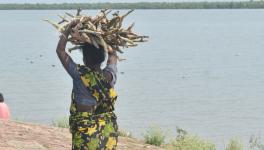Bengaluru: Once a City of Lakes, Now Faces Water Crisis

Image Courtesy: The Hindu
Bengaluru, the capital city of Karnataka is facing a severe water crisis. The government of Karnataka is planning to tackle the water crisis by putting a ban on construction of apartments in the city for five years. The Deputy Chief Minister G Parameshwara observed that there is an increase in the number of large apartment complexes but most of them have no basic amenities. Livemint quoted him as saying, "There are enough apartments being built in the city but while selling them there is no assurance of providing drinking water or other basic amenities.” Most of the residents in these apartments depend on water tankers for water. The logic provided by the state government makes sense taking into consideration the infamous traffic jams of Bengaluru and the cropping up of apartments on yesterday’s lakes which prove disastrous during monsoons.
However, the question of the sorry state of the water bodies like lakes in the city still remains, What is the government doing to revive these sources which very much could be the sources of water for the city? Bengaluru once known as pensioner’s paradise, a city of gardens and a city with pleasant weather mostly and hosting a large number of lakes, has now become a city with one of the worst water crises. According to a report in The Guardian, in the 1970s, there were still 285 lakes in the city, making it self-sufficient for its water needs. Today, however, there are just 194 lakes, and the large majority of them are sewage-fed. The rest have been lost to encroachments – by the Bangalore Development Authority, private real estate developers and illegal builders – to cater to the booming housing needs of a city of 10 million.
Also Read: Drinking Water Crisis in Karnataka Persists, Forces Schools in Udupi to Stall Mid-Day Meal Scheme
Writing about this transformation of the city and vanishing lakes, Harini Nagendra gives an example of the long forgotten lake of Bengaluru. Sampangi lake which was one of the city’s largest lakes but is a history now. The city’s famous Sri Kanteerava sports stadium stands on the lake now. Only a tiny patch of water now remains, protected because it plays a central role in an important local festival, the Karaga. The other lakes also share the same fate. As Nagendra documents, Dharmambudhi lake now hosts Bengaluru’s central bus terminus; Subhashnagar lake, Kodihalli lake and Sinivagilu lake—are now residential settlements, while Akkithimmanahalli lake is a hockey stadium. Challaghatta lake is now a golf course and Agrahar lake is yet another bus terminus.
So as Nagendra rightly writes, “A city that once cleverly conserved water is now dealing with a burgeoning population and disappearing water bodies.” On one hand, if the government is coming up with plans like bringing water from distant places, on the other, it is not following up the existing water conservation plans that the previous governments have designed. For example, rain water harvesting was made compulsory in 2016 but nothing concrete has been achieved.
Various lake conservation groups, such as Mahadevpura Parisara Samrakshane Mattu Abhivrudhi Samiti (MAPSAS), Puttenahalli Neighbourhood Lake Improvement Trust (PNLIT) and Jala Poshan, along with government support have revived a few lakes in Bengaluru. However, the government needs to invest more in reviving the lakes of the city.
Also Read: What We Ought to Learn from Tamil Nadu Water Crisis
Water Crisis and Government’s Plans
This, however, is not the case only in Bengaluru. According to a NITI Aayog report, 21 Indian cities will run out of groundwater by 2020. Some water experts in Bengaluru have pointed out in the local media that this is an exaggeration but nevertheless, they have acknowledged that the city will continue to face the water crisis. The government has proposed various projects that aim at providing the city with water from different rivers in the neighbouring districts. One much talked about project is to get water from SharavatHi in Shivamogga.
This move is not being welcomed by environmentalists and other activists in the state. According to a report in The News Minute, the project aims on drawing water from the Linganamakki reservoir in Shivamogga, which is built on the Sharavathi river. But the reservoir, which acts as a source of water for the Sharavathi hydel project, is currently facing a shortage of water since the water available is just 9% of the total capacity and will be able to generate power for only one more month at the current rate. Apart from the water shortage and the damages the project is going to cause for the villages and towns around the reservoir, it also is an over ambitious project. Bringing water from a distance of 450 km would require enormous amounts of electricity; and the construction of the pipeline required for the project would also cause environmental damages.
Also Read: Chennai Water Crisis - Mismanagement and Misplaced Priorities
Get the latest reports & analysis with people's perspective on Protests, movements & deep analytical videos, discussions of the current affairs in your Telegram app. Subscribe to NewsClick's Telegram channel & get Real-Time updates on stories, as they get published on our website.
























